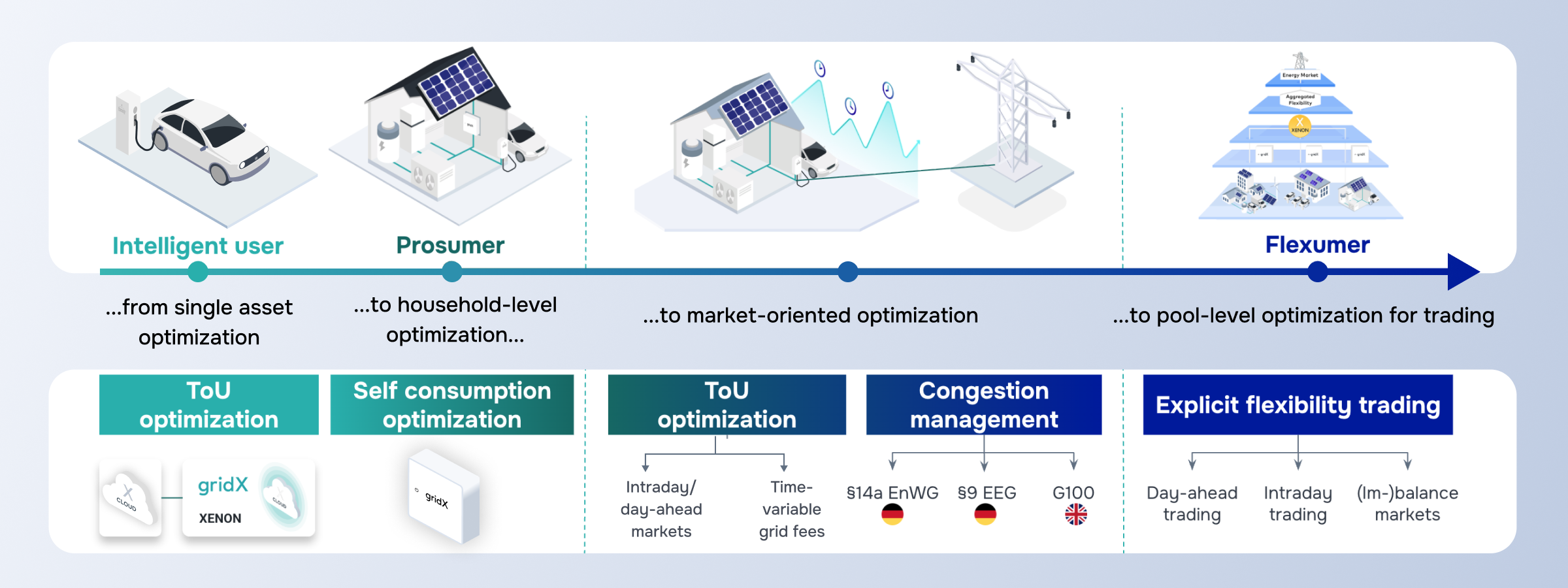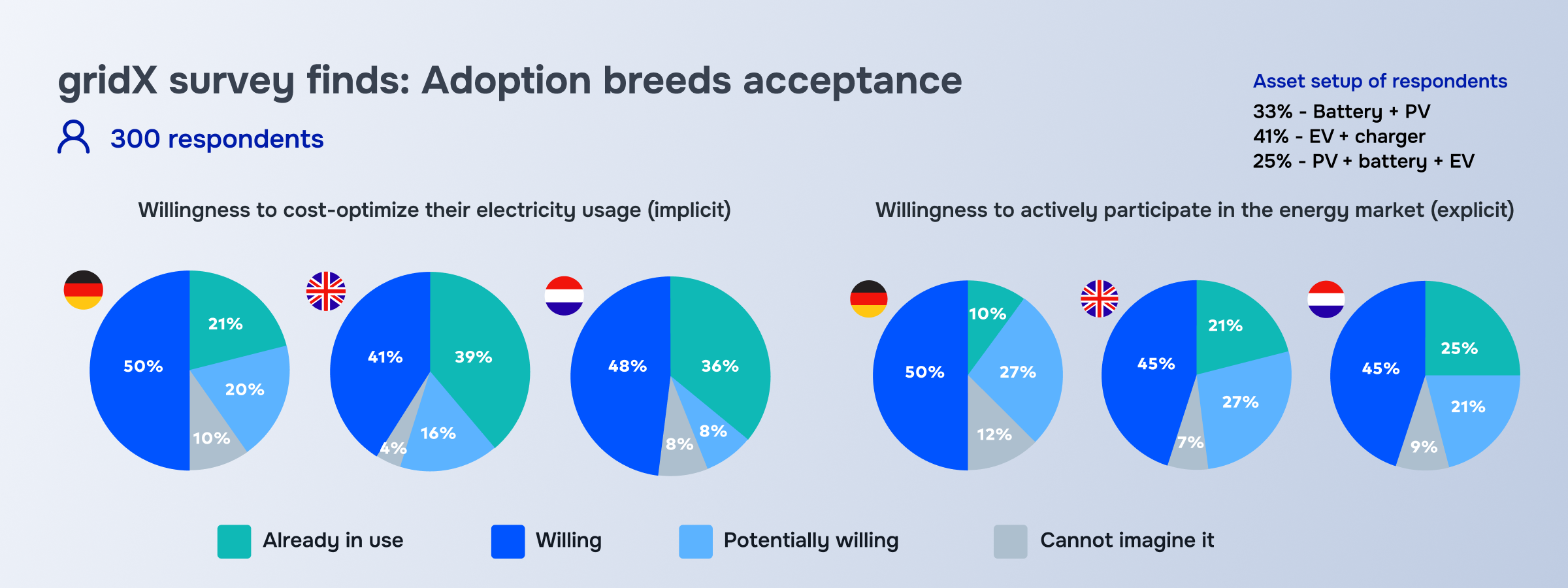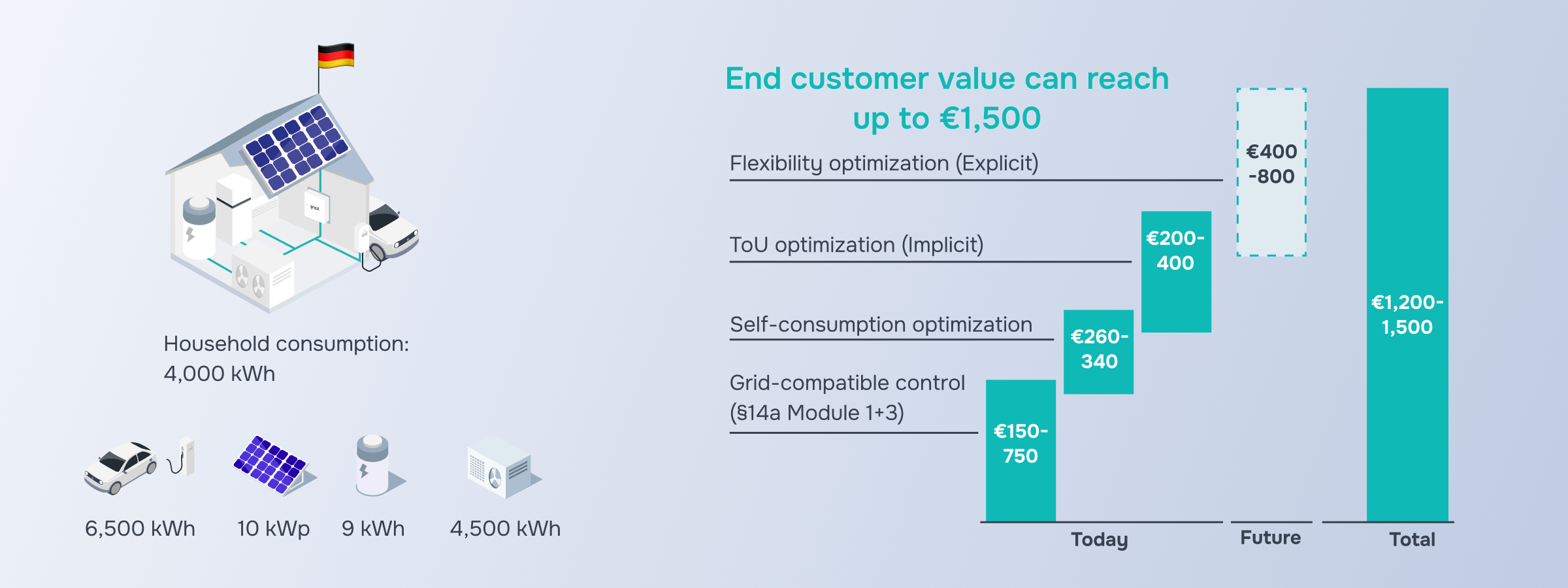Energy flexibility is a journey powered by advanced HEMS. It starts with single-asset cloud-to-cloud optimization, advances to system-wide multi-asset control and is fully utilized when aggregated demand side flexibility is traded on markets. Each stage unlocks more value: from direct savings to systemic benefits.

A gridX survey of 300 small-scale energy asset owners in the UK, Netherlands and Germany, found that many end users are ready to participate in energy markets, illustrating that as market penetration increases, customer resistance declines. In the UK, 39% of respondents already use implicit demand side flexibility, with only 4% opposed. The Netherlands leads in willingness, while Germany lags in adoption but shows high potential. The markets with a higher adoption rate also have a higher willingness, showing that as market penetration increases, customer resistance declines.

Value stacking is the key to unlocking the full potential of energy flexibility. With an advanced HEMS, households can save up to €1,500 per year. While value stacking maximizes consumer savings, it has the added benefit of also strengthening grid stability and renewable integration – all without end users sacrificing comfort or changing routines (which gridX’s survey proved is of utmost importance).
